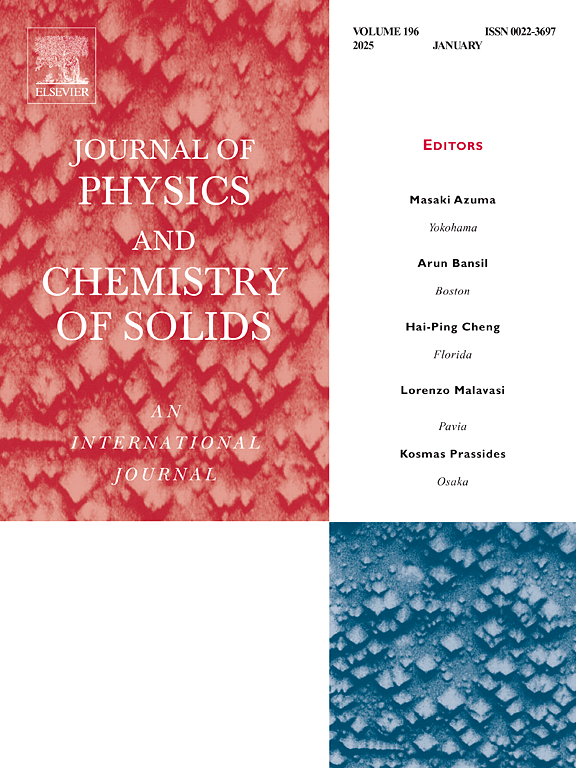Effect of the surface structure and atomic termination on the surface dipole and work function of La3Te4
IF 4.3
3区 材料科学
Q2 CHEMISTRY, MULTIDISCIPLINARY
引用次数: 0
Abstract
The work function is a key surface property that plays a prominent role in electronic transport and the thermoelectric (TE) properties of a TE material. For TE nanocomposite materials, the jump in the work function at the interface of the constituent materials can impact the figure of merit (ZT) of the system. The work function in turn is sensitive to the interfacial surface structure. In this work, the effects of the surface structure and atomic termination on the surface dipole and work function of various La3Te4 slab structures were investigated using first-principles electronic structure calculations. The computed surface dipole and work function of La3Te4 slabs are found to depend not only on the atomic surface structure, growth direction, and termination, but also on the composition of each surface component (Te-rich or La-rich). We also discovered that while the surface electron density can explain the trends in the work function with modifications of La-rich surfaces, it fails to do so in the case of Te-rich surfaces. On the other hand, changes in the work function can be explained by the electronic dipole density at the surface. We also propose a new way to estimate the surface dipole using first principles calculations, and the relationship between the work function and ZT of the two nanocomposite systems La3Te4–Ni and La3Te4–Ca is discussed.
La3Te4表面结构和原子终止对表面偶极子和功函数的影响
功函数是一个关键的表面性质,在电子输运和热电材料的热电性能中起着重要的作用。对于TE纳米复合材料,组成材料界面处功函数的跳跃会影响系统的性能值。而功函数又对界面表面结构敏感。本文采用第一性原理电子结构计算方法,研究了表面结构和原子终止对不同La3Te4板状结构表面偶极子和功函数的影响。计算得到的La3Te4平板的表面偶极子和功函数不仅与原子表面结构、生长方向和终止有关,还与各表面组分的组成(富te或富la)有关。我们还发现,虽然表面电子密度可以解释富la表面修饰后的功函数趋势,但在富te表面情况下却无法解释。另一方面,功函数的变化可以用表面的电子偶极子密度来解释。我们还提出了一种利用第一性原理计算估计表面偶极子的新方法,并讨论了La3Te4-Ni和La3Te4-Ca两种纳米复合体系的功函数与ZT之间的关系。
本文章由计算机程序翻译,如有差异,请以英文原文为准。
求助全文
约1分钟内获得全文
求助全文
来源期刊
CiteScore
7.80
自引率
2.50%
发文量
605
审稿时长
40 days
期刊介绍:
The Journal of Physics and Chemistry of Solids is a well-established international medium for publication of archival research in condensed matter and materials sciences. Areas of interest broadly include experimental and theoretical research on electronic, magnetic, spectroscopic and structural properties as well as the statistical mechanics and thermodynamics of materials. The focus is on gaining physical and chemical insight into the properties and potential applications of condensed matter systems.
Within the broad scope of the journal, beyond regular contributions, the editors have identified submissions in the following areas of physics and chemistry of solids to be of special current interest to the journal:
Low-dimensional systems
Exotic states of quantum electron matter including topological phases
Energy conversion and storage
Interfaces, nanoparticles and catalysts.

 求助内容:
求助内容: 应助结果提醒方式:
应助结果提醒方式:


